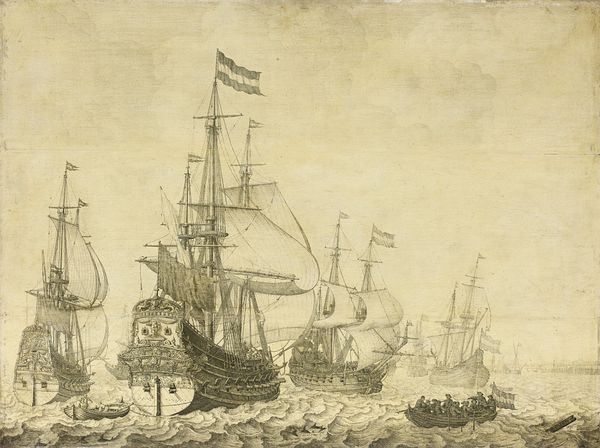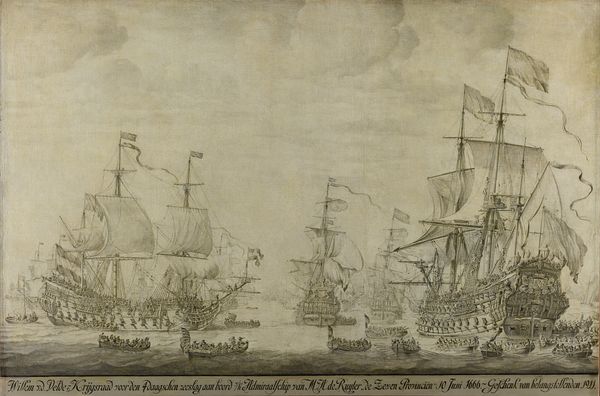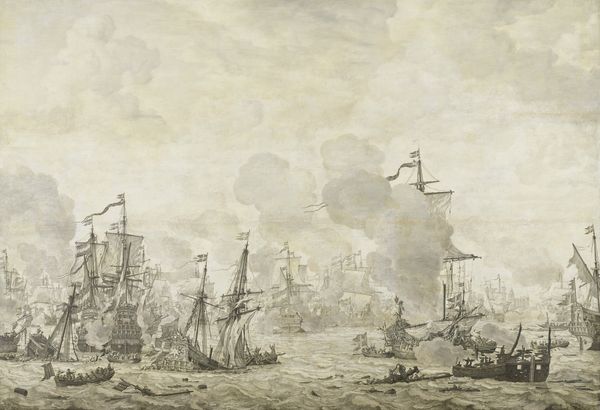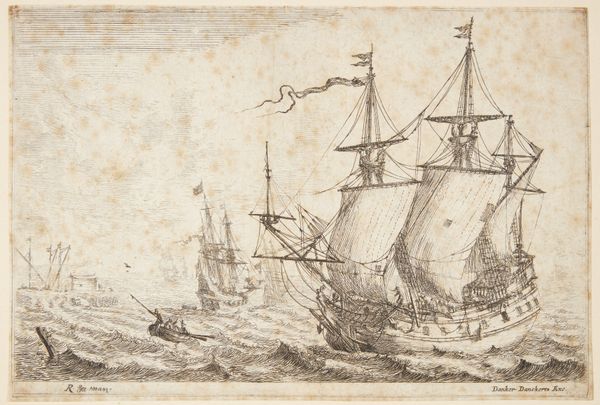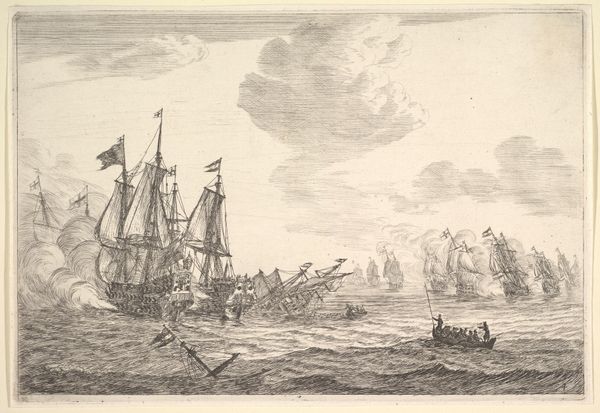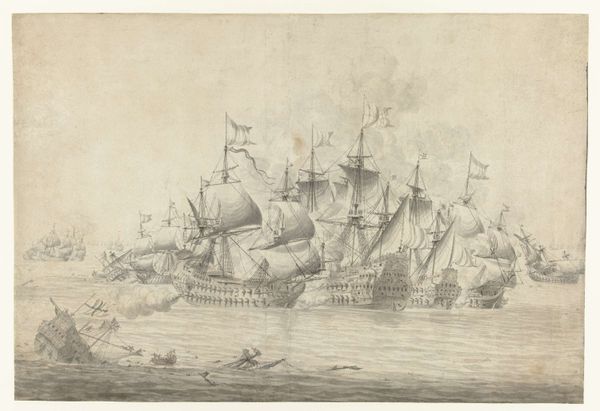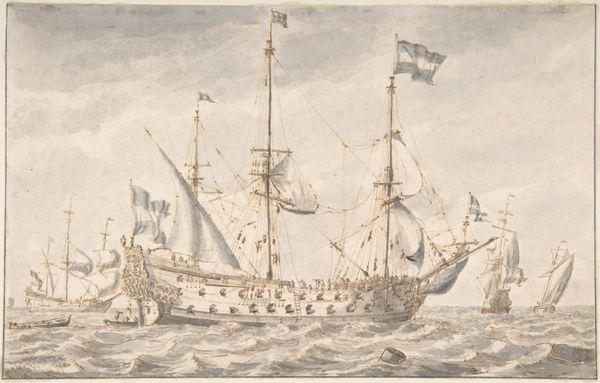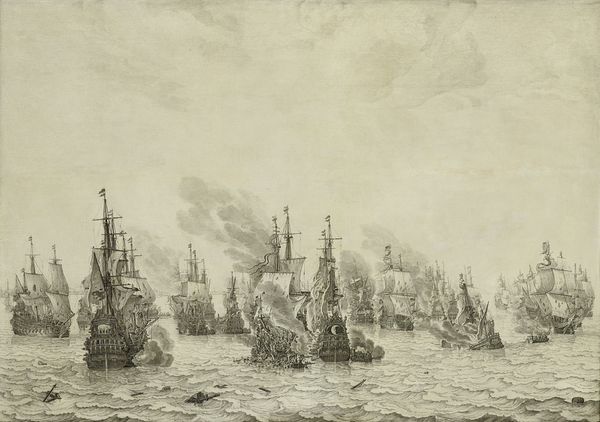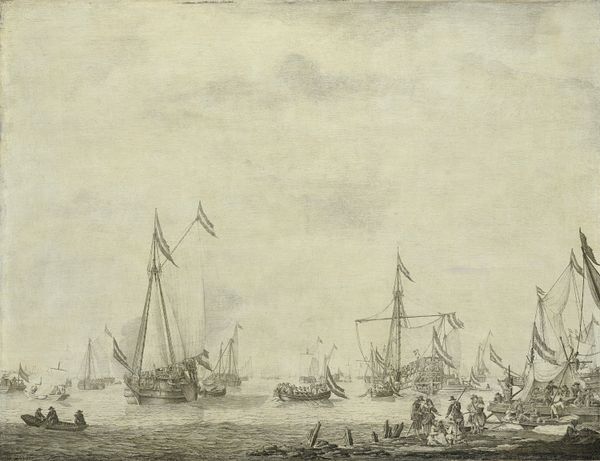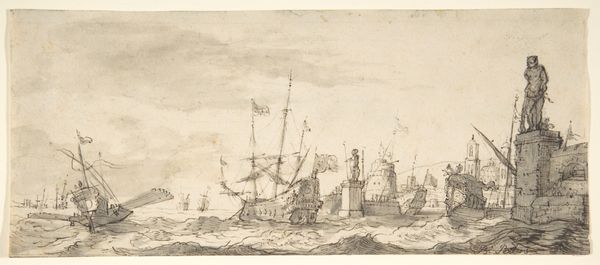
drawing, print, paper, ink
#
drawing
#
ink painting
#
dutch-golden-age
# print
#
landscape
#
paper
#
ink
#
cityscape
#
genre-painting
#
realism
Dimensions: sheet: 11 5/8 x 19 1/8 in. (29.5 x 48.5 cm)
Copyright: Public Domain
Curator: Welcome. Before us hangs "Dutch Ships on a Harbour," an ink drawing on paper created by Willem van de Velde the Elder, sometime between 1620 and 1693. It is now part of the collection at the Metropolitan Museum of Art. Editor: My first impression is of an almost dreamlike vision. A fleet of ships emerges from a misty haze, their flags barely fluttering in the breeze. There’s a strong sense of quiet activity, the calm before a storm, perhaps? Curator: I find the subject deeply rooted in Dutch cultural identity. The ships are more than mere vessels; they're symbols of trade, exploration, and dominance during the Dutch Golden Age. Consider the weight these vessels held, connecting the Netherlands to a vast global network. Editor: Yes, and thinking about the materiality— the ink, the paper— it's remarkable how these relatively simple materials were transformed into a representation of immense economic and political power. What specific kind of ink do you imagine van de Velde I favored? Also, that paper had to be acquired. Who were his suppliers? I wonder how much a sheet of paper cost during that period, relative to, say, a ship's wheel? Curator: Such an economic analysis grounds this depiction. Regarding materials, he very likely favored an iron gall ink for its sharpness and permanence, suitable for capturing such fine details. Symbolically, the ships display the Dutch flag. These colors became powerful indicators, differentiating Dutch vessels on seas busy with global commerce and projecting Dutch identity. Editor: Absolutely. It underscores how seemingly quotidian materials become charged with significance through labor and artistry. To know its material composition allows us to look back on the global markets the scene depicts, its supply chains, so to speak. Curator: Ultimately, it provokes thoughts about the Netherlands' legacy. These detailed renderings were both records and representations, reflecting national ambition and the enduring connection between the Dutch and the sea. Editor: Indeed, it prompts us to look deeper, both into the scene and at its parts: ink, paper, process, power... each telling a distinct yet interwoven story about a pivotal moment in history.
Comments
No comments
Be the first to comment and join the conversation on the ultimate creative platform.
